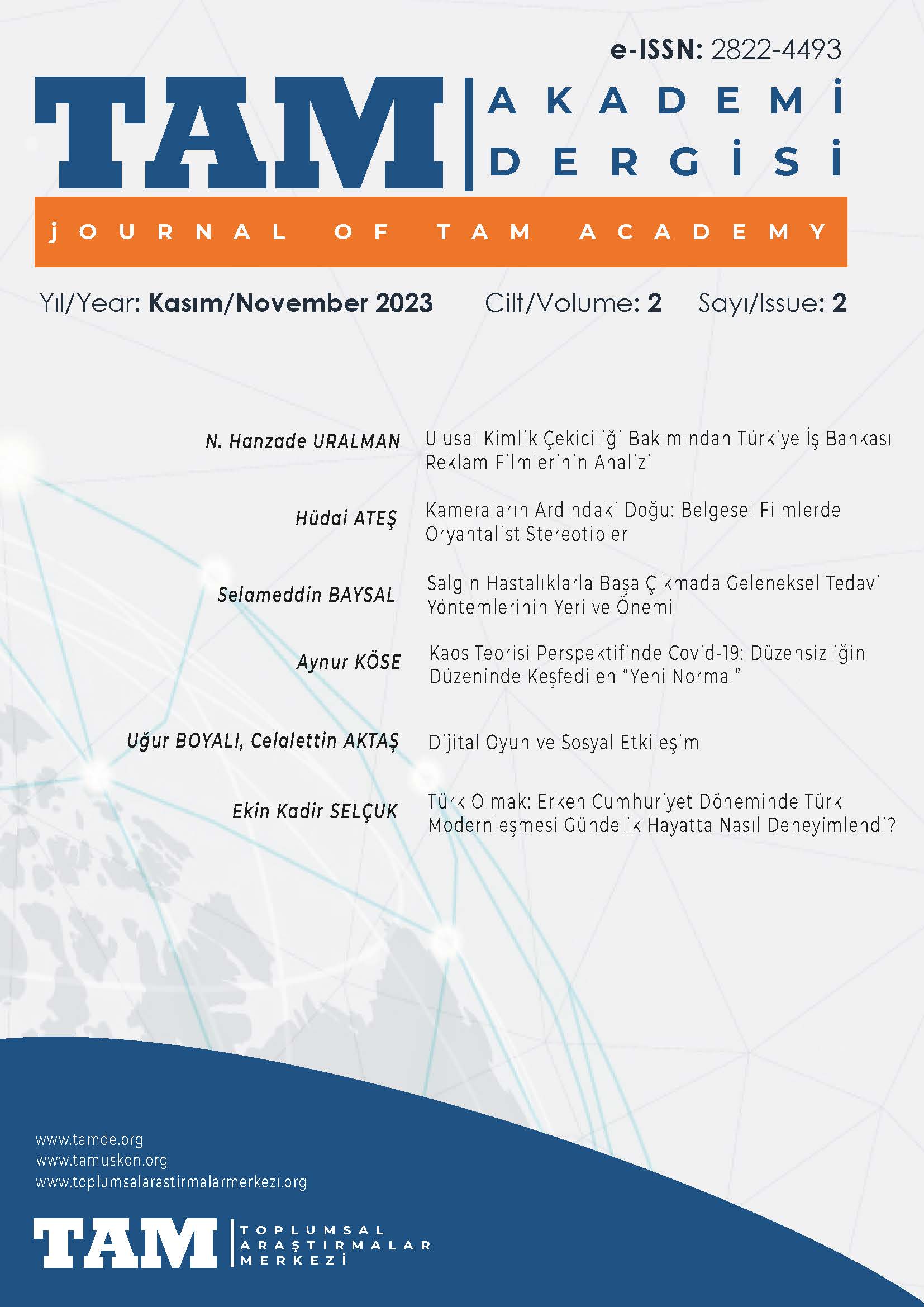Abstract
Celebrating the 100th anniversary of the Republic of Turkey in 2023 has mediated the brands' use elements of national identity in their communication efforts in Turkey. On the other hand, some brands that are directly related to the history of the republic in terms of their founding purposes and values have transformed these identity elements into a sustainable communication strategy since the day they were established. Turkey Is Bank being one of these brands that constantly uses national identity elements in its communication practices as one of the representations of the founding process of the Republic of Turkey. The aim of this study is to identify the national identity elements included in the bank’s advertising films shown on TV and shared on YouTube, and to determine which values of the republic have been transferred to the society with these messages. For this purpose, the national identity elements used in Turkey Is Bank advertising films were analyzed using the content analysis method within the framework of the national identity attractiveness codes developed for Turkey, and the transferred values of the Republic of Turkey were compiled. As a result of the study, it was determined that the republican values conveyed in Turkey Is Bank's advertising films are mostly conveyed through cultural codes. This attraction codes are followed by historical codes (events, personalities and works). Common public elements (celebrities and public symbols), country-related codes (Turkey expression, flag, national team, soldiers, cities) and national codes are used in nearly half of the commercials. Linguistic elements are included through Ataturk's words. It has been determined that throughout the films, republican values are conveyed in a nostalgic context by attaching elements from the past, and that these values contain references to the present and the future that will enable them to establish a relationship with today's audience.
References
Aaker, D. A. (1996). Building strong brands. Simon and Schuster.
Armstrong, J. S. (2010). Persuasive advertising: Evidence-based Principles. Palgrave Macmillan UK. https://doi.org/10.1057/9780230285804
Aronczyk, M. (2013). Branding the Nation: The Global Business of National Identity. Oxford University Press. https://doi.org/10.1093/acprof:oso/9780199752164.001.0001
Balta Peltekoğlu, F. (2022). Halkla İlişkiler Nedir? Beta Yayınları.
Batey, M. (2012). Brand Meaning. Psychology Press.
Berger, J. (1999). Görme Biçimleri. Metis Yayınları.
Canpolat, N. (2012). Geçmişten Günümüze Örneklerle Türkiye’de Halkla İlişkilerin Gelişimi. Seçkin Yayınları.
Clow, K. E., & Baack, D. (2005). Concise Encyclopedia of Advertising. Best Business Books: The Haworth Reference Press.
Dahlen, M., Lange, F., & Smith, T. (2009). Marketing Communications: A Brand Narrative Approach. John Wiley & Sons.
Davies, M. (1993). Developing Combinations of Message Appeals for Campaign Management. European Journal of Marketing, 27(1), 45-63. https://doi.org/10.1108/03090569310024558
Dinnie, K. (2008). Nation Branding: Concepts, Issues, Practice. Routledge.
Elden, M., & Bakır, U. (2010). Reklam Çekicilikleri: Cinsellik, Mizah, Korku. İletişim Yayınları.
Ellwood, I. (2002). The Essential Brand Book: Over 100 Techniques To Increase Brand Value. Kogan Page.
Gündüz Kalan, Ö. (2009). Reklamda Ulusal Kimliğin Kullanımı: Türkiye’de 2006 Yılı Televizyon Reklamları Üzerine Bir Araştırma [Yayımlanmamış Doktora Tezi] İstanbul Üniversitesi.
Hetsroni, A. (2000). The Relationship Between Values and Appeals in İsraeli Advertising: A Smallest Space Analysis. Journal of Advertising, 29(3), 55-68. https://www.jstor.org/stable/4189152
Kapferer, J.-N. (2012). The New Strategic Brand Management: Advanced Insights and Strategic Thinking. Kogan Page.
Kotler, P., & Armstrong, G. (2010). Principles of Marketing. Pearson.
Kunczik, M. (2016). Images Of Nations and International Public Relations. Routledge.
Moran, N., & Bagchi, R. (2019). The Power of Emotional Benefits: Examining The Role of Benefit Focus on Donation Behavior. Journal of Advertising, 48(3), 284-291. https://doi.org/10.1080/00913367.2019.1602857
Moriarty, S. E. (1991). Creative Advertising: Theory and Practice. Prentice Hall.
Petracca, M., & Sorapure, M. (2007). Advertising’s Fifteen Basic Appeals. Içinde Common Culture: Reading and Writing About American Popular Culture (ss. 73-90). Pearson.
Pollay, R. W. (1984). The Identification and Distribution of Values Manifest in Print Advertising 1900-1980 en Personal Values and Consumer Behavior, AG Woodsode and R. Pitts, eds. Lexington, MS. Pitts, eds. Lexington, MS.
Pollay, R. W. (1985). The subsiding sizzle: A descriptive history of print advertising, 1900-1980. Journal of Marketing, 49(3), 24-37. https://doi.org/10.2307/1251613
Rusciano, F. L., Fiske-Rusciano, R., & Wang, M. (1997). The Impact of “World Opinion” on National Identity. Harvard International Journal of Press/Politics, 2(3), 71-92. https://doi.org/10.1177/1081180X97002003006
Tarasheva, E. (2014). Image of a Country Created by İnternational Media: The Case of Bulgaria. Cambridge Scholars Press.
Uralman, N. H., & Selvi-Taşdan, Ö. C. (2017). A Corporate Communication Analysis of a Long-Standing Turkish Brand: Is Türkiye ̇İs ̧Bank A Heritage Brand? Estudos em Comunicação, 24. https://ojs.labcom-ifp.ubi.pt/ec/article/view/75
Ünsal, Y. (1971). Bilimsel Reklam ve Pazarlamadaki Yeri. Bilim Kitabevi.

This work is licensed under a Creative Commons Attribution-NonCommercial-ShareAlike 4.0 International License.
Copyright (c) 2023 Journal of TAM Academy





